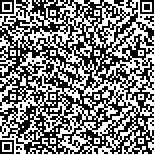| This article has been:Browse 1041Times Download 2828Times |

scan it! |
|
|
| DOI:10.13522/j.cnki.ggps.2023383 |
|
| Using the surface energy balance algorithm model to calculate evapotranspiration in Luhun irrigation area |
|
ZHANG Jinping, LI Dubai, LI Xuechun, CUI Yunfei
|
|
1. School of Water Conservancy and Transportation, Zhengzhou University, Zhengzhou 450001, China;
2. Yellow River Ecological Protection and Regional Coordinated Development Institute, Zhengzhou 450001, China
|
| Abstract: |
| 【Objective】Evapotranspiration in terrestrial ecosystems is not only a component of hydrological cycle but also controls plant productivity. Understanding its spatiotemporal variation in a region is hence important for improving its water and agronomic management. This paper is to present a method for accurately and rapidly evaluating evapotranspiration at high spatial resolution in irrigation areas using remote sensing technology and energy balance model.【Method】The model is based on the surface energy balance algorithm (SEBAL) model by using Landsat-8 remote sensing imageries and meteorological data. Using this model, we calculate the evapotranspiration in the Luhun Irrigation area and analyzed its variation.【Result】The simulated SEBAL values are strongly correlated with both evapotranspiration products (v 1.5) and ground-true data, with the associated correlation coefficients exceeding 0.8 and 0.96, respectively. As plants grow, their evapotranspiration increases progressively from February to May, with the evapotranspiration in cropped regions higher than that in forested regions. Peak evapotranspiration is 106.52 mm, occurring from June to July primarily in cropped regions. The evapotranspiration decreases from August to September, with the region having higher evapotranspiration shifting toward the northeast of the region.【Conclusion】Using remote sensing satellite imagery and other complementary data, the SEBAL model is accurate for estimating evapotranspiration at high spatial resolution in a region. It has important implication for improving irrigation management in irrigation districts. |
| Key words: actual evapotranspiration; SEBAL model; crop growth period; spatial autocorrelation |
|
|